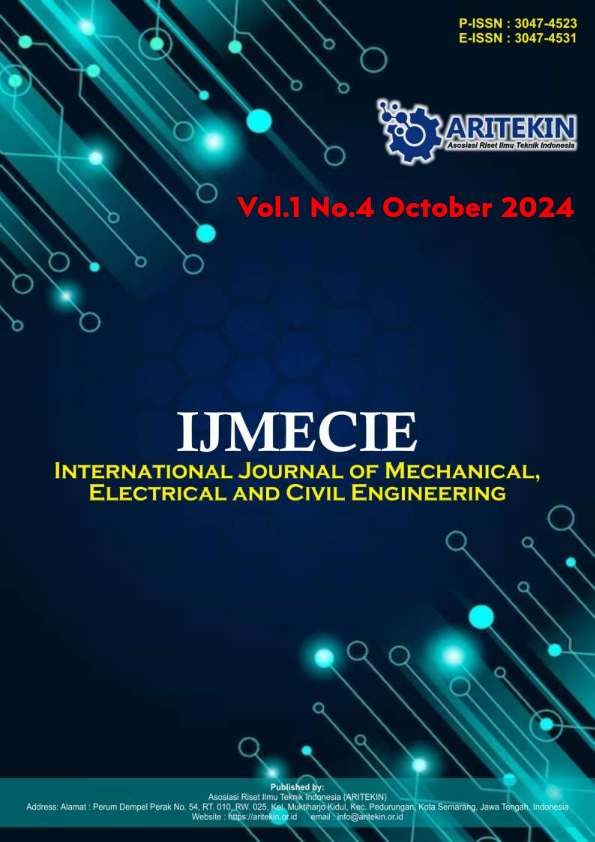Formulating Tracing and Linking Algorithm For Identifying Cyber Terrorism Website
DOI:
https://doi.org/10.61132/ijmecie.v2i2.266Keywords:
cyber-attack, cyber terrorist, data mining, Fraud, Internet, Intrusion, technology, websiteAbstract
Nowadays, the number of cyber terrorists that using Internet as a medium keep increasing around the world are really worrying. Even though the cyber terrorist is publishing their post openly and public, there are quite difficult to recognize their main communication media. This happen because the cyber terrorist might hide their agenda through any sympathetic base website. Therefore, the aim of this project is to formulate tracing and linking algorithm using data mining technique in order to identify the relationship between each cyber terrorism components that may result to cyber terrorism website.
References
N. Mohd Salleh, S. R. Selamat, R. Yusof, and S. Sahib, "Discovering cyber terrorism using trace pattern," *Int. J. Netw. Secur.*, vol. 18, no. 6, pp. 1034–1040, 2016.
D. E. Denning, *Activism, Hacktivism, and Cyberterrorism: The Internet as a Tool for Influencing Foreign Policy*. Arbor House Publishing Company, 2000.
M. Rouse, "Electronic terrorism and information warfare," *TechTarget*, 2010. [Online]. Available: https://www.techtarget.com
Y. Schweitzer and S. Shay, *The Globalization of Terror: The Challenge of Al-Qaida and the Response of the International Community*. Sussex Academic Press, 2011.
J. R. Curran, "Cyber terrorism: Its place in global security," *Int. Secur. Stud. J.*, vol. 5, no. 3, pp. 29–42, 2011.
A. Lewis, "Critical infrastructures: Securing the networks of the 21st century," *Cybersecurity J.*, vol. 7, no. 2, pp. 14–28, 2013.
F. J. Cruz, "The exploitation of vulnerabilities: Analyzing cyber terrorism," *J. Inf. Warfare*, vol. 12, no. 4, pp. 34–46, 2013.
C. A. Theohary and J. Rollins, *Cyberwarfare and Cyber Terrorism: Infrastructural Attacks in the Digital Era*. Congressional Research Service, 2015.
S. Dombe and A. Golandsky, "The evolution of cyber terrorism: Strategies and countermeasures," *J. Cybersecurity Stud.*, vol. 5, no. 3, pp. 87–100, 2016.
M. Alisha, "Cyber terrorism: The technological dimension of modern terrorism," *Int. J. Secur. Netw.*, vol. 6, no. 2, pp. 33–40, 2010.
R. Noor, "Emerging threats: Analyzing the impact of cyber terrorism on global security," *J. Digit. Crime*, vol. 3, no. 4, pp. 45–56, 2011.
R. James, "National exposure index: A study on global cyber vulnerabilities," *Rapid7 Cybersecurity Reports*, 2016. [Online]. Available: https://www.rapid7.com
R. Heickero, "Terrorism online: The new generation," *J. Inf. Warfare*, vol. 6, no. 1, pp. 25–34, 2007.
S. Gordon and R. Ford, "Cyberterrorism? Computers as weapons of terror," *Comput. Secur.*, vol. 21, no. 7, pp. 636–647, 2002, doi: 10.1016/S0167-4048(02)01007-X.
Z. Yunos and R. Ahmad, "Evaluating cyber terrorism components in Malaysia," in *Proc. 5th Int. Conf. Inf. Commun. Technol. Muslim World (ICT4M)*, 2014, doi: 10.1109/ict4m.2014.7020582.
N. Mohd Salleh, S. R. Selamat, R. Yusof, and S. Sahib, "Discovering cyber terrorism using trace pattern," *Int. J. Netw. Secur.*, vol. 18, no. 6, pp. 1034–1040, 2016.
S. R. Selamat et al., "Traceability in digital forensic investigation process," in *2011 IEEE Conf. Open Syst.*, pp. 101–106, 2011, doi: 10.1109/icos.2011.6079259.
E. Simperl, "Collaborative ontology engineering: A survey," *Knowl. Eng. Rev.*, vol. 27, no. 1, pp. 1–29, 2012, doi: 10.1017/S0269888912000058.
A. Smita and G. Amol, "Techniques for efficient linking of data in relational databases," *Int. J. Database Manag.*, vol. 5, no. 2, pp. 12–20, 2014.
L. Yen, "Predictive analytics using link analysis: Applications in cybercrime and medical fields," *J. Data Min. Anal.*, vol. 8, no. 3, pp. 45–60, n.d.
P. Minky, "Mining web-based systems for knowledge acquisition," *J. Inf. Syst.*, vol. 6, no. 4, pp. 19–26, 2014.
L. Lifang, X. Wang, and Y. Zhang, "Advances in record linkage techniques for data integration," *J. Database Manag.*, vol. 10, no. 2, pp. 33–40, 2003.
S. B. Dusetzina et al., "Linking data to support comparative effectiveness research," *Med. Care*, vol. 52, no. 10 Suppl 3, pp. S41–S47, 2014, doi: 10.1097/MLR.0000000000000077.
C. Jared, "Advanced probabilistic record linkage for relational databases," *Database Technol. J.*, vol. 12, no. 5, pp. 67–75, 2016.
S. Yannik, "Machine learning-assisted record linkage: A hybrid approach," *J. Mach. Learn. Appl.*, vol. 9, no. 4, pp. 56–70, 2014.
L. A. Nguyen, B. L. To, H. K. Nguyen, and M. H. Nguyen, "Detecting phishing websites: A heuristic URL-based approach," in *2013 Int. Conf. Adv. Technol. Commun. (ATC)*, pp. 187–192, 2013, doi: 10.1109/atc.2013.6698185.
R. Pooja, "Textual analysis for detecting radicalization in online communities," *J. Soc. Netw. Anal.*, vol. 4, no. 1, pp. 22–30, 2013.
National Science Foundation, *The Use of Mixed Methods in the Social Sciences: Evaluating Qualitative and Quantitative Research*. Washington, D.C.: NSF, 2002.
Downloads
Published
How to Cite
Issue
Section
License
Copyright (c) 2025 International Journal of Mechanical, Electrical and Civil Engineering

This work is licensed under a Creative Commons Attribution-ShareAlike 4.0 International License.





